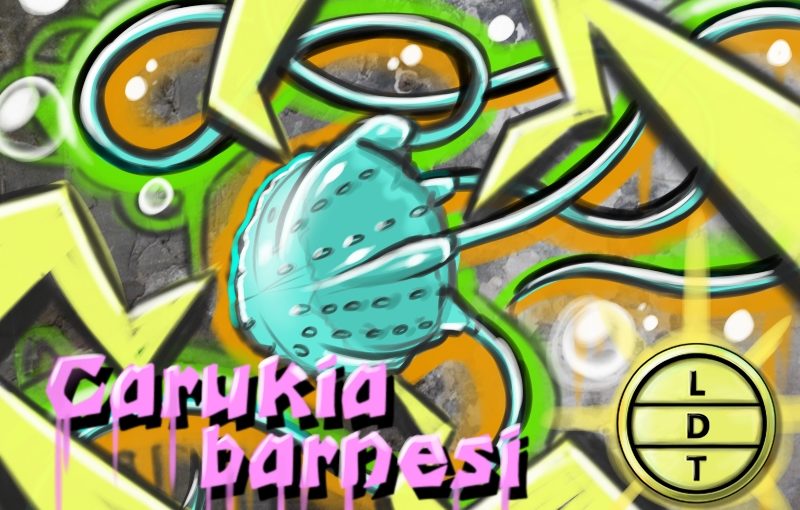“…And today we’re talking about a smol sea booger with a nasty sting. But more on that later.”
Australia is filled with lots of cute things, and also lots of deadly things. The irukandji jellyfish is that second part, but also a little bit of the first. At about the same size as a match head, these tiny terrors amble about around the waters of Western Australia. Anything or anyone unfortunate enough to brush up against this near-invisible squish bag will find themselves in a world of hurt at best, and a body bag at worst. So be careful in the water, because a cute little jellyfish just might take your Life, Death, and Taxonomy.
Description
- The irukandji is a small jellyfish with a square bell and stinging tentacles.
- The bell is translucent and can be shades of blue, white or completely see through.
- It can be difficult to spot an irukandji in the water because it can be nearly invisible when transparent.
- Even scientists and lifeguards who capture them in buckets have a hard time seeing these small creatures.
Measure Up
Bell height – 30 mm (1.18 inches) – how many jellyfish bells go into the height of the liberty bell (3 feet)? Hint: the bottom of a bell is called the lip and the top is called a crown. Answer: 30 jellies
Tentacle length – 5 to 50 cm (19 inches) – How many of the longest tentacles go into the length of a lion’s mane jellyfish tentacle (30 meters)? Hint: the lion’s mane jellyfish is the longest animal on earth. Answer: 62 jelly tentacles
Lifecycle
- Like other jellyfish, the irukandji can alternate between sessile polyps and floating medusae.
- They start out as larvae called planula, which are floating flat specks.
- The planula use cilia to get around to find a good spot to anchor to.
- Once they find a spot, they enter the polyp phase.
- Polyps will asexually reproduce to create polyp colonies.
- In the polyp stage they can be found in the benthic region, of the ocean floor.
- Mature polyps break off into a free floating ephyra larva and then morph into a medusa.
- As medusae, they float freely, close to the surface to catch prey.
- Prey are stung, paralyzed, and taken into the bell to be digested.
- Medusae sexually reproduce with one another by releasing sperm and eggs into the water, which produce new planula.

